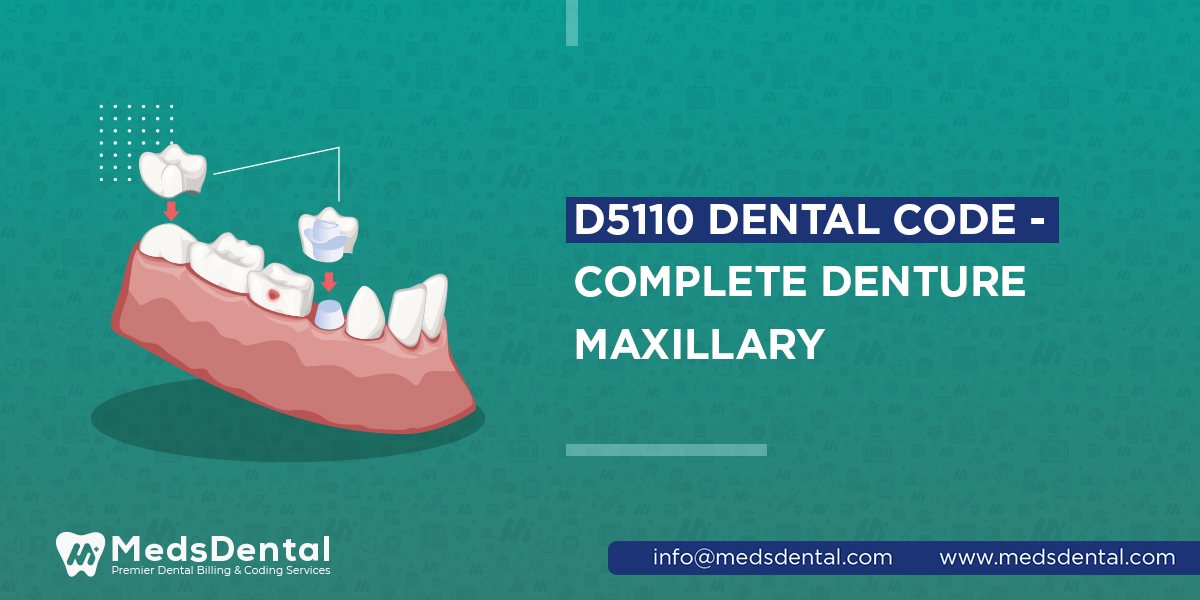

To verify that you are using the optimal CDT code for the specific process you are billing for, it is crucial to check for other dental procedure codes and the D5110 Dental Code before utilizing it.
A dental code for preventive oral prophylaxis, often known as a professional cleaning to remove stains, calculus, and plaque, is D5110. This cleaning aids in preventing gum disease, cavities, and other oral health problems. It is usually recommended as part of a thorough dental care therapy every six months.
Dentists use code D5110 to refer to a restricted oral examination as part of an initial or comprehensive dental examination. The dentist examines your teeth, gums, bite, and other internal structures during a D5110 evaluation to look for any possible oral health issues or oral cancer. They may also start creating a treatment plan for any current problems using this code and provide recommendations for enhancing your dental health.
The overview code for dentistry, D5110, covers a broad range of dental operations. The code gives a general idea of how a dental plan will cover various forms of dental care. The D5110 code is a helpful place to start when figuring out the kinds of operations commonly covered by dental insurance, even though it is not an exhaustive list of all dental procedures.
The D5110 code covers numerous preventative, diagnostic, and therapeutic services. Preventive dental care includes procedures like teeth cleanings and sealants that work to stop dental issues before they start. Dental problems are diagnosed via diagnostic services like X-rays. These include fillings and extractions that are treated using therapeutic therapies.
The D5110 code is divided into four categories: Each category is then further divided into subcategories.
The coverage percentage of each D5110 code category varies. The variety of preventive services has the highest coverage rate, with most plans paying 100% of the associated costs. Less coverage is provided for diagnostic and rehabilitative services, with most insurance policies only covering 50% of their expenses. With most plans just paying a portion of the cost of these services, the miscellaneous category has the lowest coverage percentage.
Use this code to insert a single crown on a tooth. Porcelain, ceramic, or metal are just a few materials used to create the crown. Putting a dental bridge in place also uses this code. Several lost teeth can be replaced with a dental bridge. The surrounding teeth's dental crowns serve as anchors for the bridge. Whereas the insertion of a dental implant also uses this code. A dental implant is a metal post inserted into the jawbone to replace a missing tooth. The implant then supports a dental crown.
The prophylaxis, or tooth cleaning, procedure is denoted by the dental number D5110. This operation helps to clean the teeth and remove any material that can cause gum disease or tooth decay. Sealants, slender, transparent coatings placed in the grooves on the chewing surfaces of back teeth, are likewise designated by the D5110 code. These sealants shield the teeth from food particles and germs that cause tooth decay.
The American Dental Association (ADA) annually publishes the D5110 Dental Code and all other CDT codes (Current Dental Terminology), which are reference manual codes used to refer to the Code on Dental Procedures and Nomenclature (CDT Code). Most dentists, dental facilities, and dental insurance providers accept these codes.
Do you intend to get dental work done? If so, you might need clarification on the dental codes that apply to you. To assist you in making an informed choice, the following six frequently asked questions about dental codes are provided:
A preventative dental service that comprises an oral examination, cleaning, and fluoride treatment is identified by the D5110 code. Patients who are brand-new to a dental practice or have not seen the last sawin over a y frequently use this code.
The D0120 code references a thorough oral examination. Patients who have established relationships with dental offices and frequent dental visits frequently utilize this code.
The D1110 code denotes dental cleaning performed by a professional. Patients who routinely visit the dentist and don't have any health issues frequently utilize this code.
Using the D1330 code, a fluoride treatment is described. Patients with sensitive teeth or at risk for dental decay frequently utilize this code.
To describe a sealant application, use the D4355 code. Patients with deep grooves in their teeth or at risk for dental decay frequently utilize this code.
The D9940 code denotes Prophylaxis (cleanings) for a youngster up to age 18. Patients who routinely visit the dentist with no significant dental issues frequently utilize this category.
Do you require any help with the CDT-Codes D5110 Dental or other CDT-Codes? We will be pleased to help you. You can get assistance from our outstandingly qualified team with any dental treatment code (CDT Code)-related issue. To contact us, kindly use the comment form below or contact us on the page.
© MedsDental. All rights reserved 2026. Powered by MeshSq.